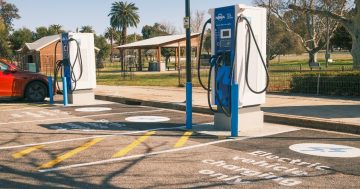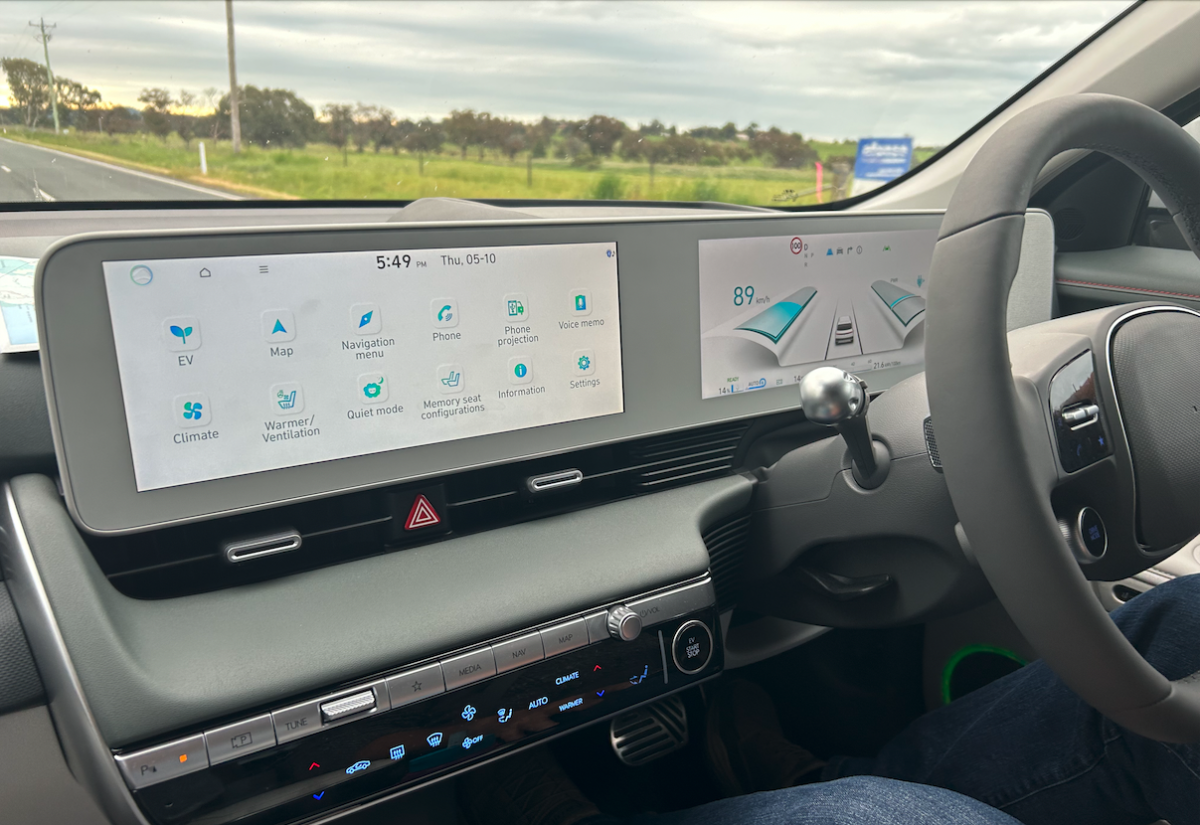
The Hyundai Ioniq in this article has a range of around 420-450 km, meaning a road trip of 1000 km or more is an easy proposition with the right planning and preparation. Photo: Vanessa Hayden.
Year in Review: Region is revisiting some of the best Opinion articles of 2023. Here’s what got you talking, got you angry and got you thinking this year. Today, Vanessa Hayden takes us on a road trip.
After 12 months of research, we took the plunge and purchased a Hyundai Ioniq 5 and picked it up from Wagga Motors one month ago.
The vehicle we chose promised a range of 420-450 km, enough to travel a fair distance, we reckoned, and regenerative charging, meaning braking and going downhill put kilometres back in the kitty.
We planned an extended adventure to get familiar with the vehicle’s capabilities, what charging involved, how far we could ”get” in one hit and what our savings would be.
We discovered quite a lot – most of it good.

Plan your journey around charging stations where you can take the opportunity to look around. Photo: Vanessa Hayden.
Our trip looked something like this: Jindera to Canberra, 334 km (overnight); Canberra to Cooma, 120 km (lunch); Cooma to Bermagui, 160 km (overnight); return trip, Bermagui to Marulan, 278 km (overnight); Marulan to Jindera, 450 km (via Canberra for a meeting).
There was a voracious study of the Plugshare App before we left to work out where we could charge up. This is a great app. It’s easy to use and very helpful, most of the time, telling you if charging stations are working and available. There’s a check-in service so you can communicate to others using the app how long you are charging for and whether there are any issues at the stations.
If we ran the gauntlet, we probably could have reached Canberra in one run, but you don’t want to do this, for reasons that will become clear.
Day one was a good day: smooth sailing, arrival on time as expected. Day five of our return was not so smooth, but we made it, albeit around two hours later than it ”normally” would have taken.
Here are a few takeaways so far:
- Plan and have a back-up plan
- Start the day with a full charge if you can
- Buy the equipment so you can plug in at a home or anywhere there’s a powerpoint when you are not travelling
- Download these apps: Chargefox, BP Pulse, Plug Share, EV Up
- Pack a thermos if you don’t want to spend the dollars buying hot drinks
- Allow between 30 minutes and an hour to get the charge you need.
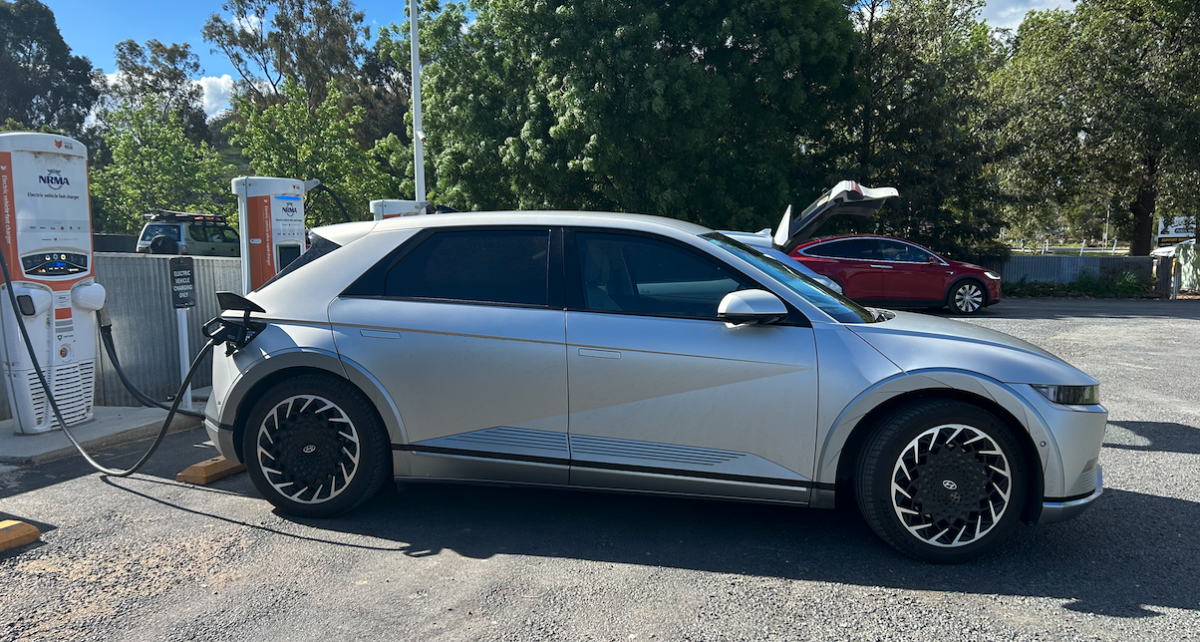
Charging requires patience but offers the chance to stretch the legs and explore. Photo: Vanessa Hayden.
Our first day saw Canberra as our destination and curiosity saw us call into Tarcutta on the way to check out the charging station at the Ampol service station. One EV station was in use, the other wasn’t working. We didn’t need to charge, but if we did, the wait was 20 minutes for the person to finish. Add to that a 30-minute charge and you’d be lengthening your trip by an hour.
On to Yass, where we arrived on a Sunday afternoon and plugged straight into an NRMA outlet where the charge-up was free and we stayed for 30 minutes.
In Canberra overnight, we plugged into our friend’s house. No-one seems to mind this and it’s not going to draw horrendous amounts of power. It’s a slow-trickle charge and the Hyundai will gain about 20 per cent from a 12-hour charge.
We set off to Cooma, knowing we’d arrive with about 30 per cent battery, and we stopped at the Snowy Hydro Discovery Centre. Another perfect location for a break.
There are three fast chargers here – we had no problems getting straight onto one – the Plugshare App was correct in saying all were available. The Chargefox App meant we could watch how fast our vehicle was charging while we were eating lunch. We charged for 42 minutes and it cost $27.60.
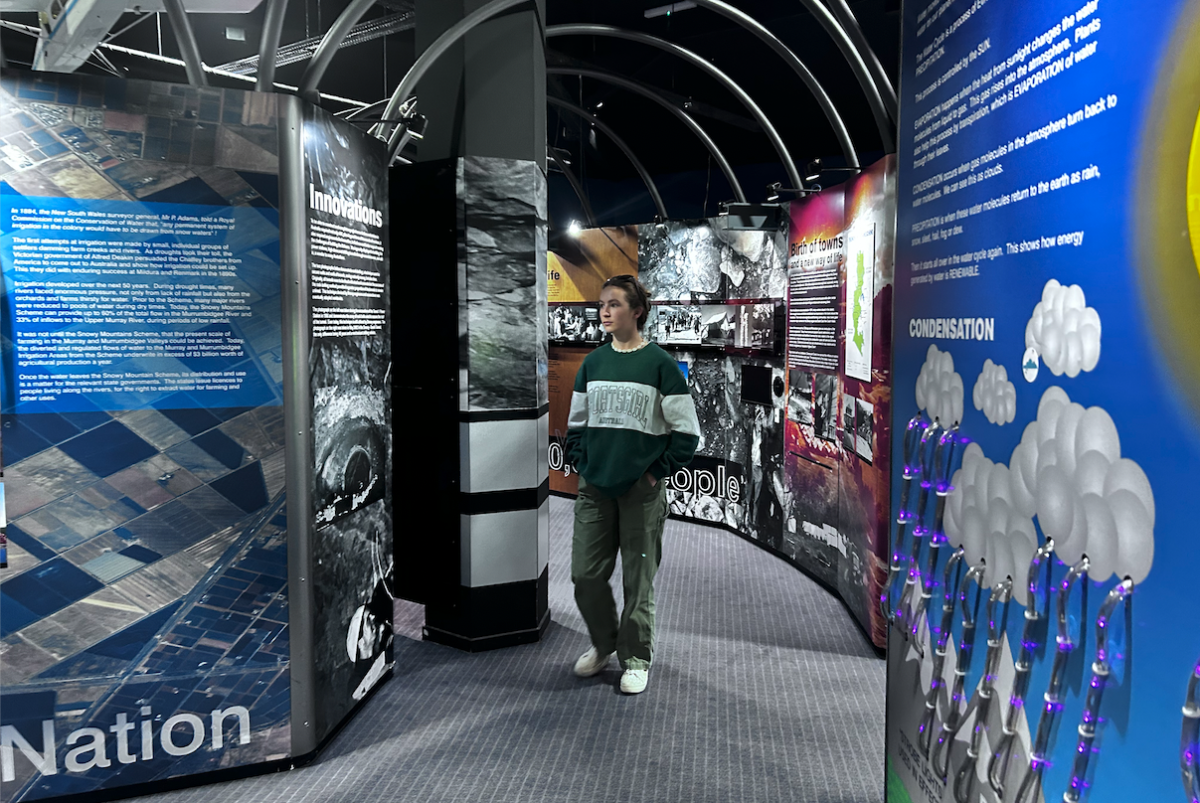
The Snowy Hydro Discovery Centre in Cooma has three fast chargers and a great visitor centre and cafe where you can easily fill in an interesting hour’s stopover. Photo: Vanessa Hayden.
On the way down Brown Mountain, we got back around 18 km from the regenerative charging the vehicle provides, without even using the brakes.
On arrival at Bermagui, we plugged into the cabin’s powerpoint, and did each time we weren’t moving. There’s a Fishermen’s Wharf charging station, which was available and operational but is not a fast charger. We figured we’d have to be plugged in for two hours to get a good top-up – not a problem in such a beautiful location.
Due to the Bermagui bushfires, our trip from here went a bit askew. Talk about needing back-up plans! Luckily, we had maintained a good percentage of battery by staying plugged in at the cabin. We had to take off after only one night and head north. We stopped at Moruya, plugged in overnight at our cabin and then drove on to Marulan the next day.
We thought we’d stop in Braidwood and get a good top-up so that the trip home the following day would be plain sailing ….
Well, we didn’t read the Plugshare App properly and both stations were non-existent. First hiccup. On closer inspection of the app, we then picked up the ”coming soon” notation. Never fear, we had just enough to get to Marulan with an estimated 40 km range left and we could plug in there overnight. Second hiccup. It was a very, very windy night and the plug came out at the wall (not the car). Woke up the next morning with little gain.
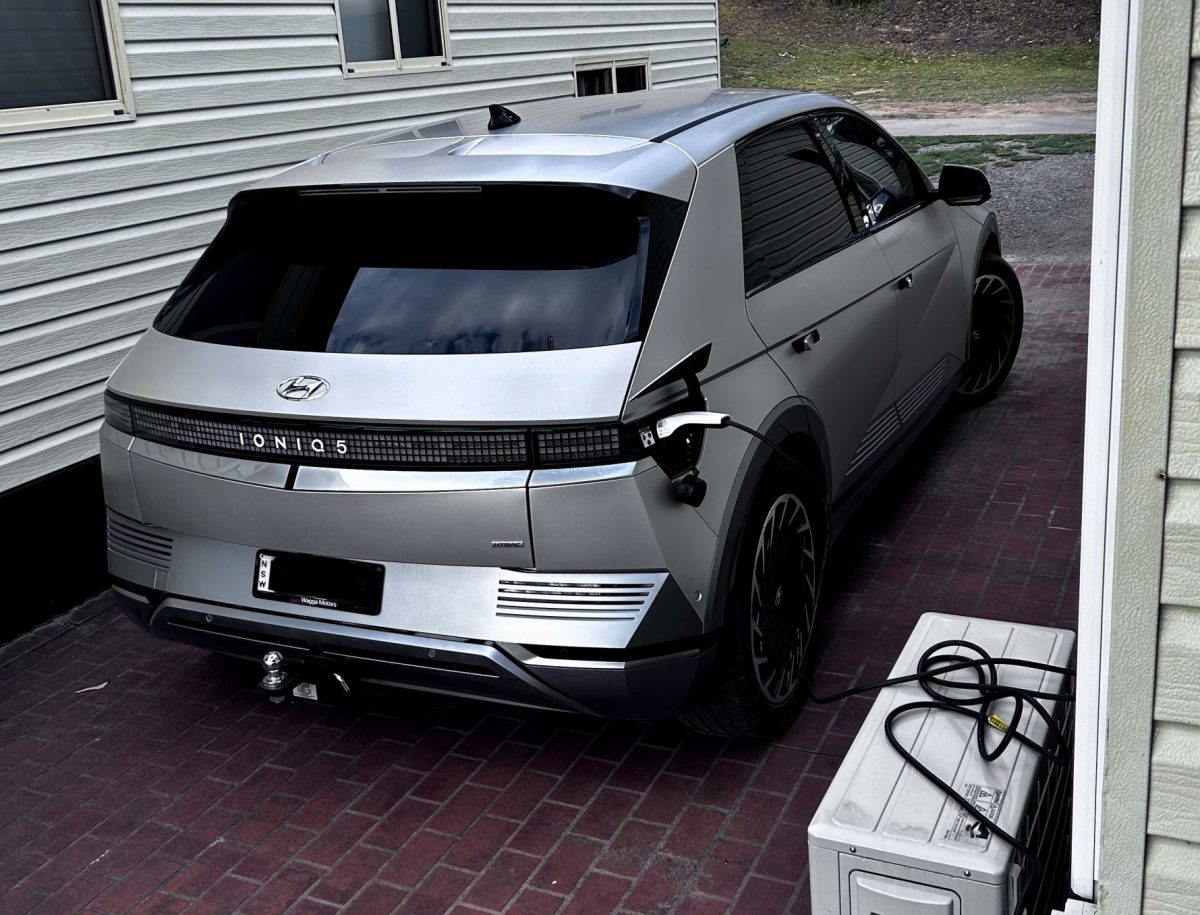
When you are travelling, stay plugged in when you aren’t moving! Photo: Vanessa Hayden.
Luckily for us, the Marulan BPs on either side of the Hume both have fast chargers and it took 47 minutes to get to 85 per cent, costing $22.
We had to go via Canberra on the way home for a quick work meeting and then it was back to Yass for a top-up at the free NRMA station. It was Friday and it was busy. Someone was just finishing as we got there, so no wait required. We charged for 40 minutes (patience is a virtue) and scouted the local op shops while we waited, picking up a few great bargains.
Some more takeaways:
- Make sure you are app savvy. You use them a lot. In fact, it wouldn’t be possible without a smartphone or device
- Allow for extra time if you are stopping at charging stations for the first time as you’ll need to download an app and set up payment options (and email, password, etc)
- Don’t be impatient, top-up to the capacity you need when you find a good charging station
- You’ll discover new places. Take the time to look around when the opportunity arises
- It’s satisfying not paying (much) to recharge while you watch hundreds of cars pumping hundreds of dollars of fuel into their vehicles.
Our next planned stop would be Gundagai, some 100 km down the track, for a final top-up before the last leg of 175 km to our home. It was the last Friday of the NSW school holidays and obviously every other EV driver was on a similar path.
There were three NRMA stations at Oliver’s on the freeway in Gundagai, but only two were working and they were full. Mmmmmm. So, we had to wait. (There are also four high-kWh Tesla chargers here, which we possibly could have used if they were series 2 but we haven’t sussed that out yet).
We discussed going to Tarcutta, but what if the station wasn’t working? We didn’t want to risk it, so we waited our turn and charged up long enough to get us home.
We arrived home with 30 km to spare, which was a little nerve-wracking, to say the least.
I estimate that on the final day, we dedicated two hours to recharging – adding to an already long day of travel.
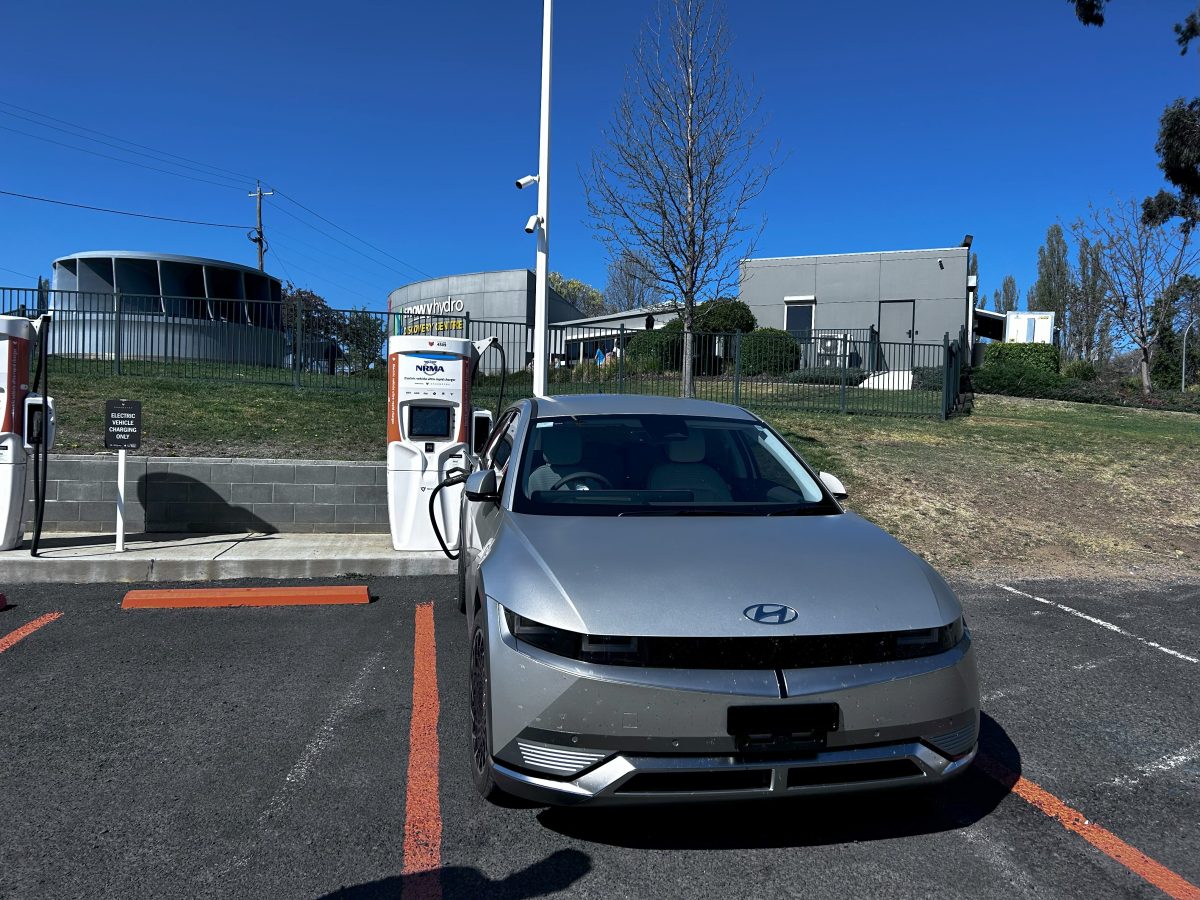
As the proliferation of charging stations increases, it will become easier to travel. Photo: Vanessa Hayden.
Final takeaways:
- Know where your next stations are and have a back-up plan in place to get you there if the station you are aiming for doesn’t work out
- All the EV users we met were friendly. Communication at the stations was excellent, with people quick to tell you how long they’d be (and always the obligatory chat about your vehicle and its performance)
- Our 1400 km trip cost us about $60 in charging, and probably two more hot drinks than we would normally have purchased. Oh, and we wandered around the locations where the charger was and spent on ”things” we had to have!*
- We found there were plenty of charging options on this route, however, we did purposely choose it rather than go over the hill through Tumbarumba (no chargers yet) to the coast
- Sometimes you have to wait, but generally not too long; allow for it, add at least an hour more to your trip than you would account for with a petrol car
- Stay charged up. Unless you are on the home run and know you are almost there, keep your charge level high to avoid any emergencies
- Once you are driving an EV, you notice other EVs. It’s surprising how many are out there. I feel confident that charging stations will be on the increase and it will become easier to travel.
Did we love it? Yes. Was it stressful? No. We loved not spending the money on petrol, and of course, the nature of an electric vehicle. We were cautious on the trip, but I know we will get better at planning and understanding the ratios.







